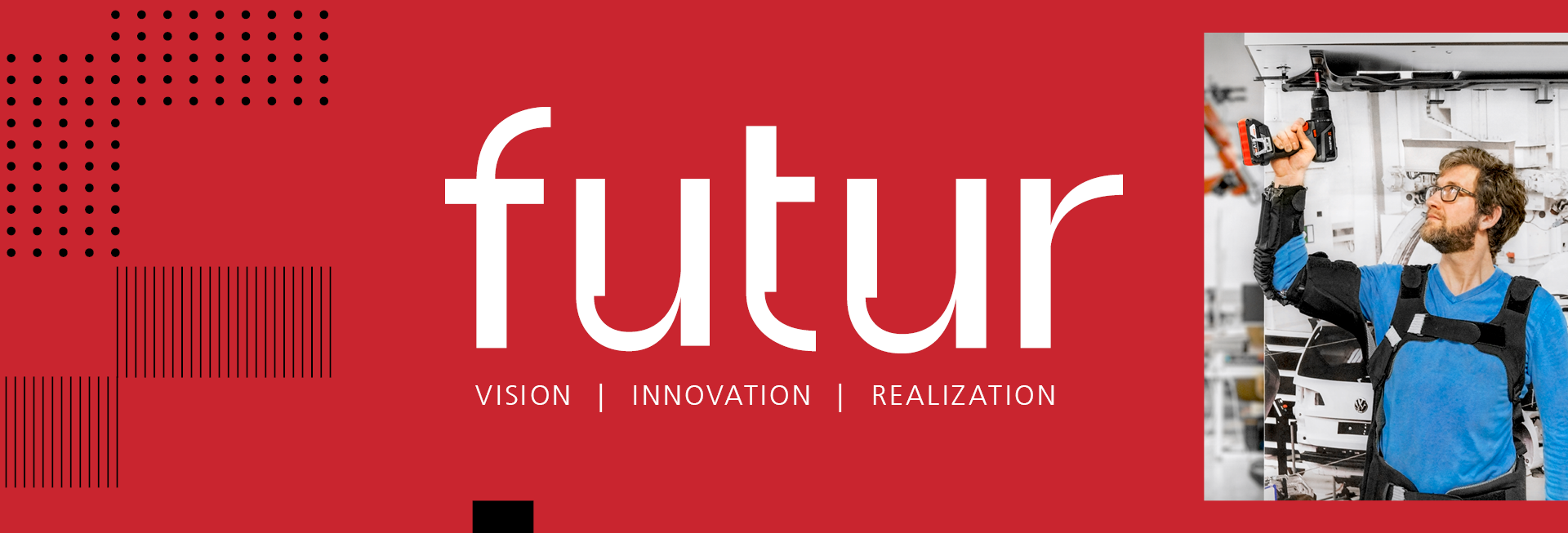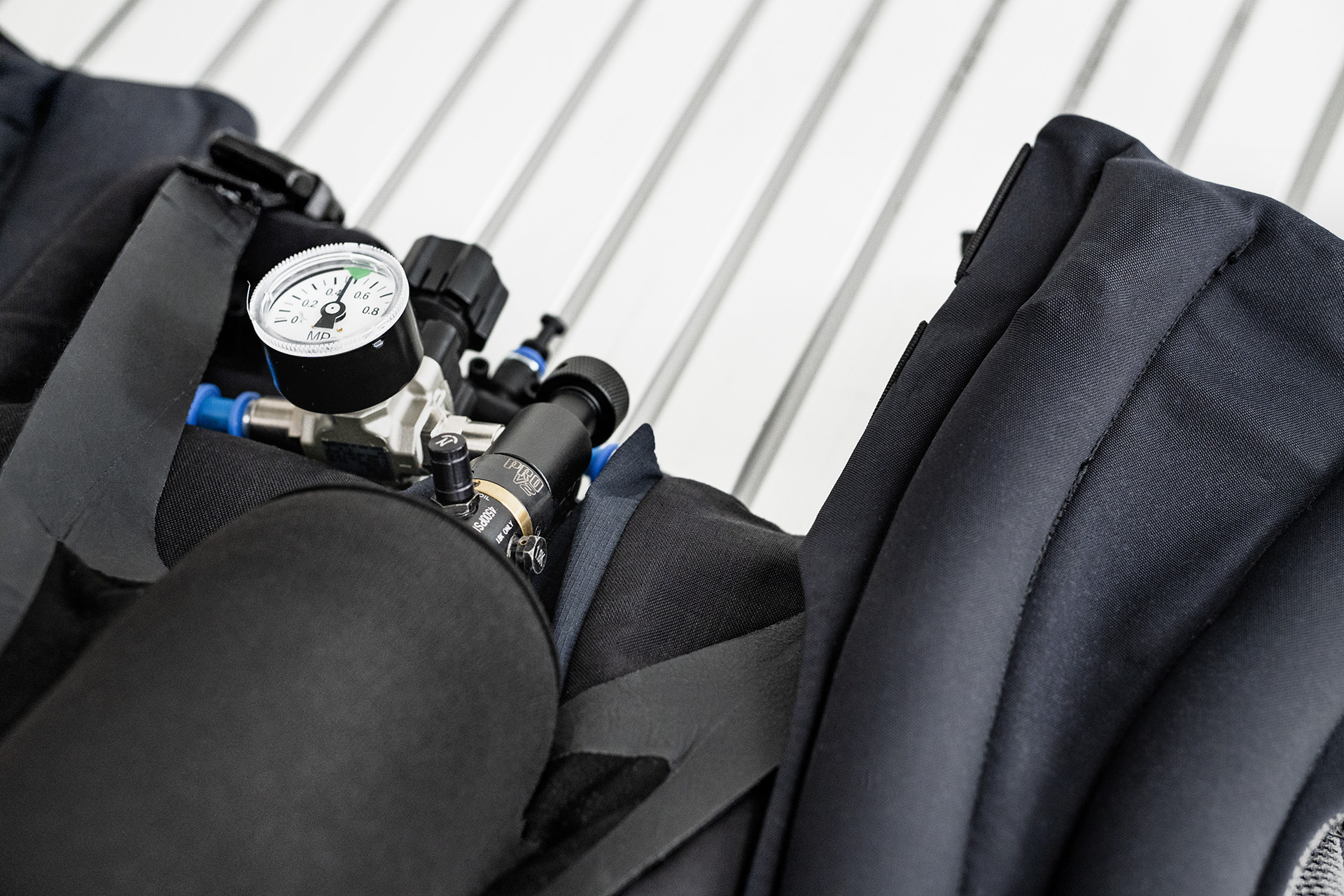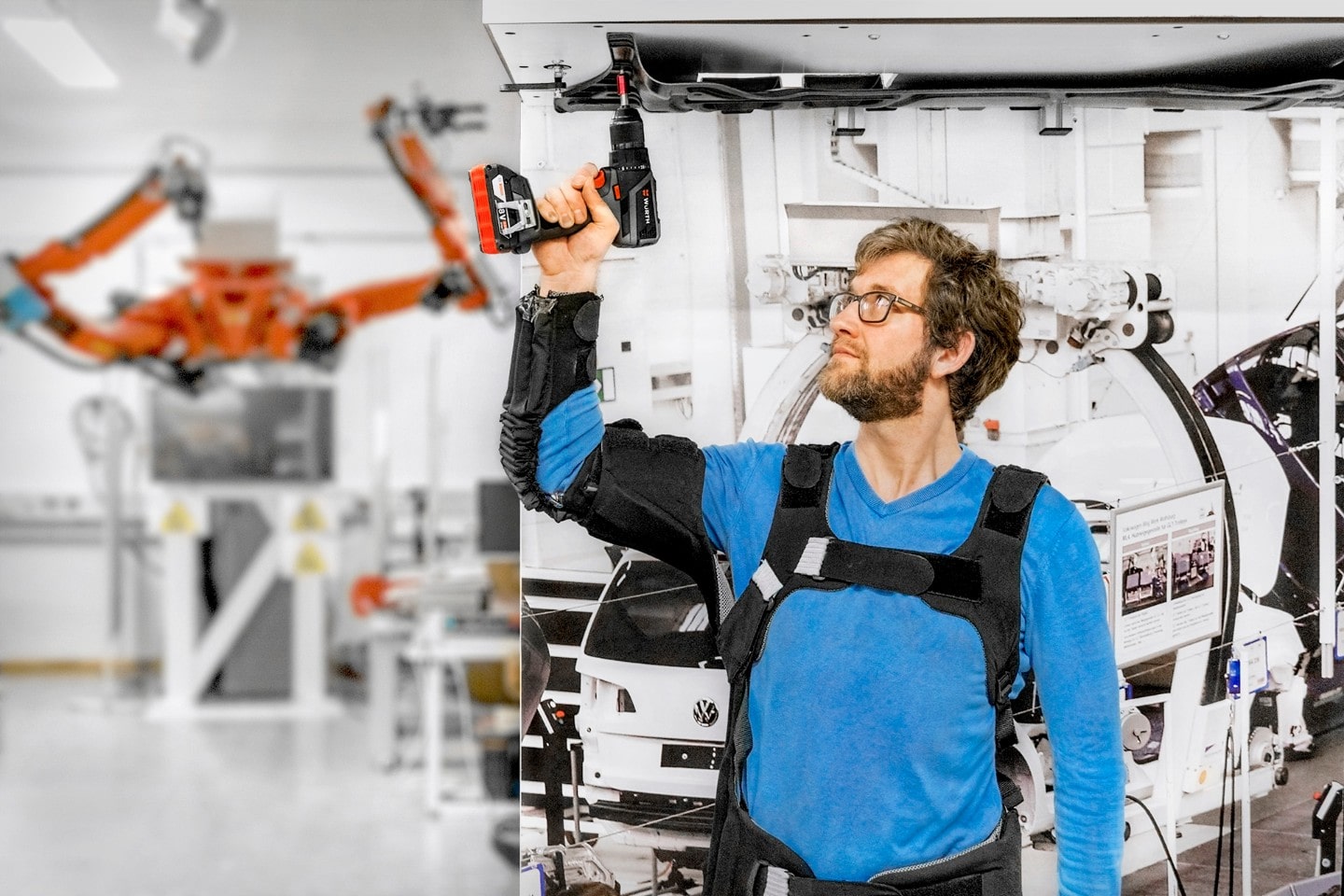New Ergonomics
Our society is aging. Demographic change is no longer a future scenario, but already fully underway. This is particularly evident when it comes to physical activity: The number of musculoskeletal system disorders is constantly increasing. These disorders lead to temporary and permanent absences from work, the inability to plan reliably, as well as a lack of resources. Wear and tear and injuries to the musculoskeletal system are therefore fundamental challenges faced by our society.
Persons who spend 30 years working on an assembly line have a right to ergonomically optimal working conditions. A safe working environment and ergonomics training are half the battle in this regard. The rest could be provided by automation solutions, for example. But even the increasing integration of robotics into work processes cannot provide one hundred percent relief from injurious activities, because not everything can be automated. Humans remain far superior to any robot in terms of cognitive and sensorimotor abilities, and thus flexibility as well. Therefore, if a large number of work processes cannot be performed by robots, ergonomic work must be supported by automation that is as flexible and inventive as humans themselves.
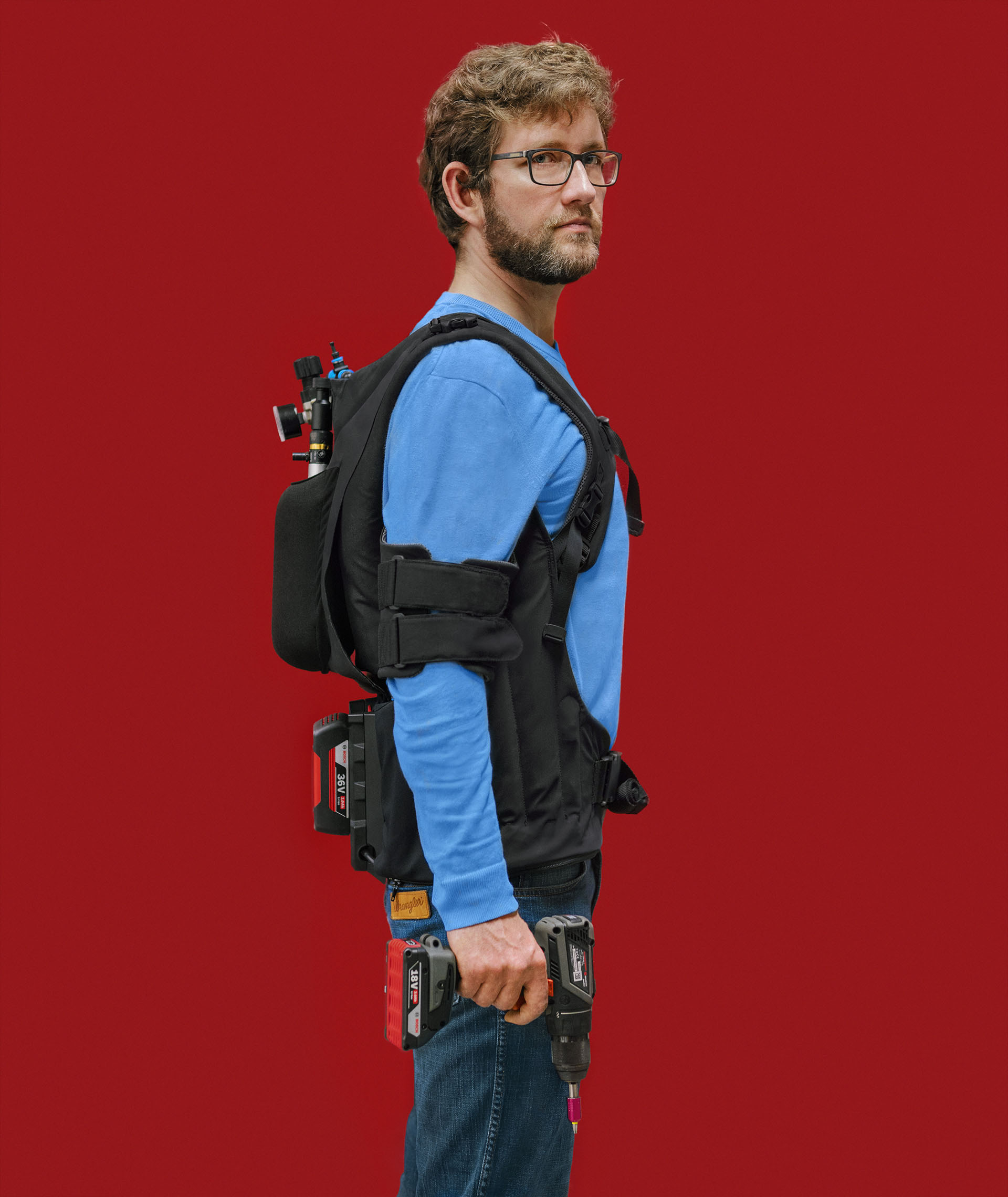
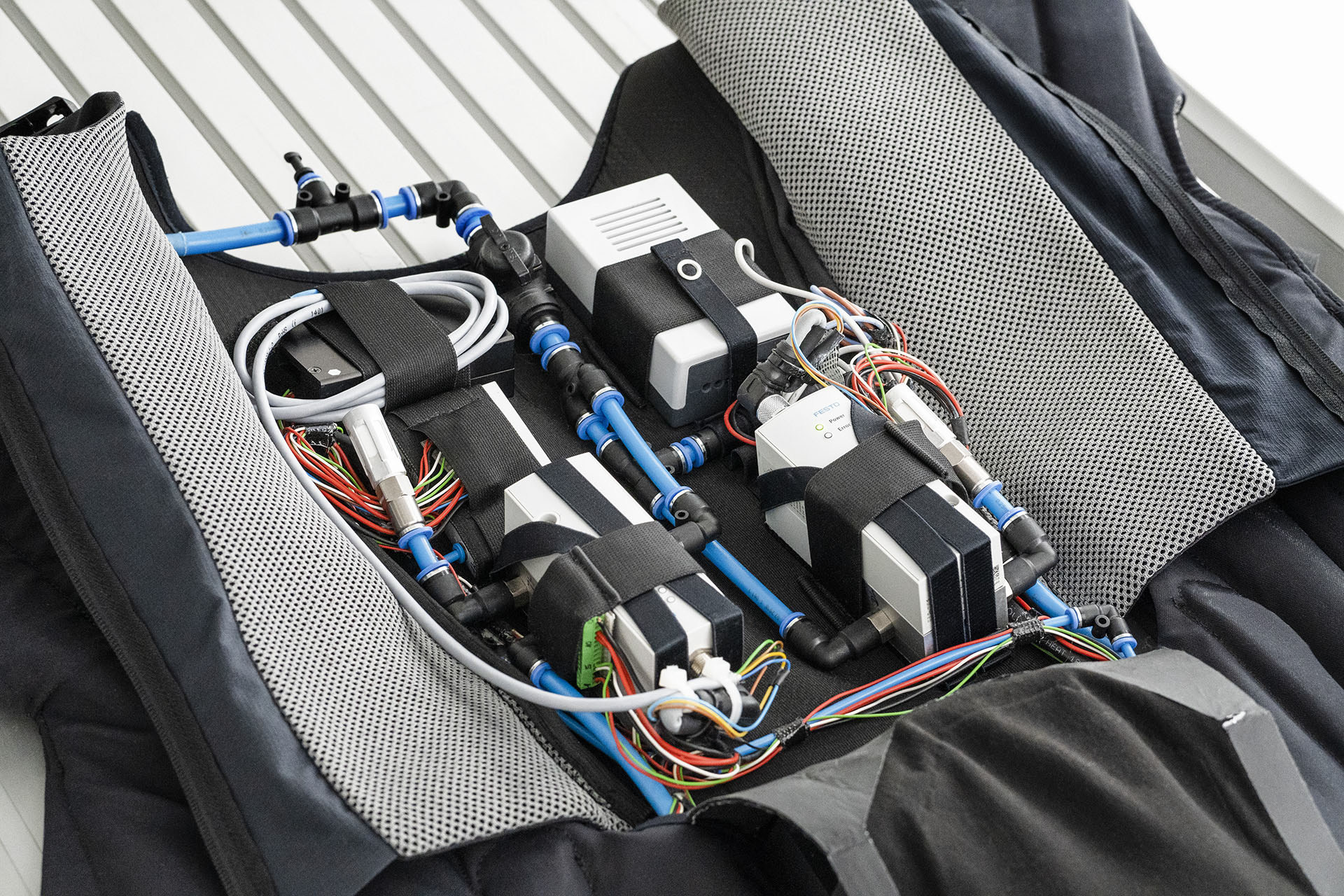
Man and machine
This is where body-mounted support systems come in. A distinction is made between purely ergonomic support and systems that provide additional strength support. Ergonomic support is provided by the Ergo-Jack® orthosis developed at Fraunhofer IPK, which uses sensors to detect movement in order to inform wearers when they are moving in a manner that is ergonomically unfavorable. However, such systems reach their limits when ergonomic posture is not possible during a particular activity. This includes, for example, handling objects in an overhead position. Passive and active exoskeletons address this problem by providing strength support. A passive exoskeleton does so via mechanical components such as spring elements. These redirect the force applied by the worker from overworked areas to more robust regions of the body. However, this type of force redistribution also has disadvantages, as movements that do not require stress relief receive equal support, such that the wearer must apply a great amount of force to overcome the weight relief.
Active exoskeletons, on the other hand, are supplemented with electrical or pneumatic components. Motion steps are operated via a control console or even sensors which measure muscle tension directly. The downside of these systems, some of which are extremely heavy, rigid and expensive, is the potential risk of injuries when malfunctions occur. As a result, both types of exoskeleton have a limited range of applications. Because of their disadvantages, they are often ruled out as an option. This is exactly where PowerGrasp comes in.
Nothing but hot (compressed) air
Anyone who has ever worn a more traditional exoskeleton will understand what it is like to be a character in a science fiction movie. When it comes to PowerGrasp, these complex constructions are nowhere to be found, as the dual arm exosuit offers maximum wearing comfort: It is worn like a textile vest. It contains almost no rigid elements. Instead, force relief is provided via precisely applied compressed air. The process is conceivably easy. The wearer's movements are detected via sensors and analyzed by a control unit. Air pressure is then built up in a targeted fashion in the shoulder joint actuators to provide upper arm strength support.
The system requires no adjustment or calibration in advance, so wearers can start working immediately after switching it on. PowerGrasp is designed for 50 to 150 overhead work cycles. After this, the empty compressed air cylinder can be replaced in a few simple steps and refilled in about a minute, after which it is once again ready for use.
The risk of injury associated with more traditional exoskeletons is eliminated, as users can counteract and override the force of the actuator even in the event of malfunctions. The total weight of the system is 6.5 kilograms – an enormous contrast to active exoskeletons which weigh 15 to 20 kilograms. Instead of a bulky frame, the back module only contains the mobile compressed air supply and control system, a rechargeable battery, and an embedded control unit. The concept can be applied to almost all areas of the body and has been implemented at Fraunhofer IPK to showcase an application for arm and wrist joints.
Creative helper
PowerGrasp manages to satisfy the human requirement for flexibility and creativity with its ergonomic and strength support: The closely fitting exosuit works not only by means of traditional force compensation, but also uses novel neuronal networks that offer situation- dependent process control for relieving the load. In future, this will enable the system to respond to the user's fatigue by increasing assistance. PowerGrasp is thus currently being further developed into a system that significantly improves work ergonomics whilst providing maximum wearing comfort and a minimal risk of injury.
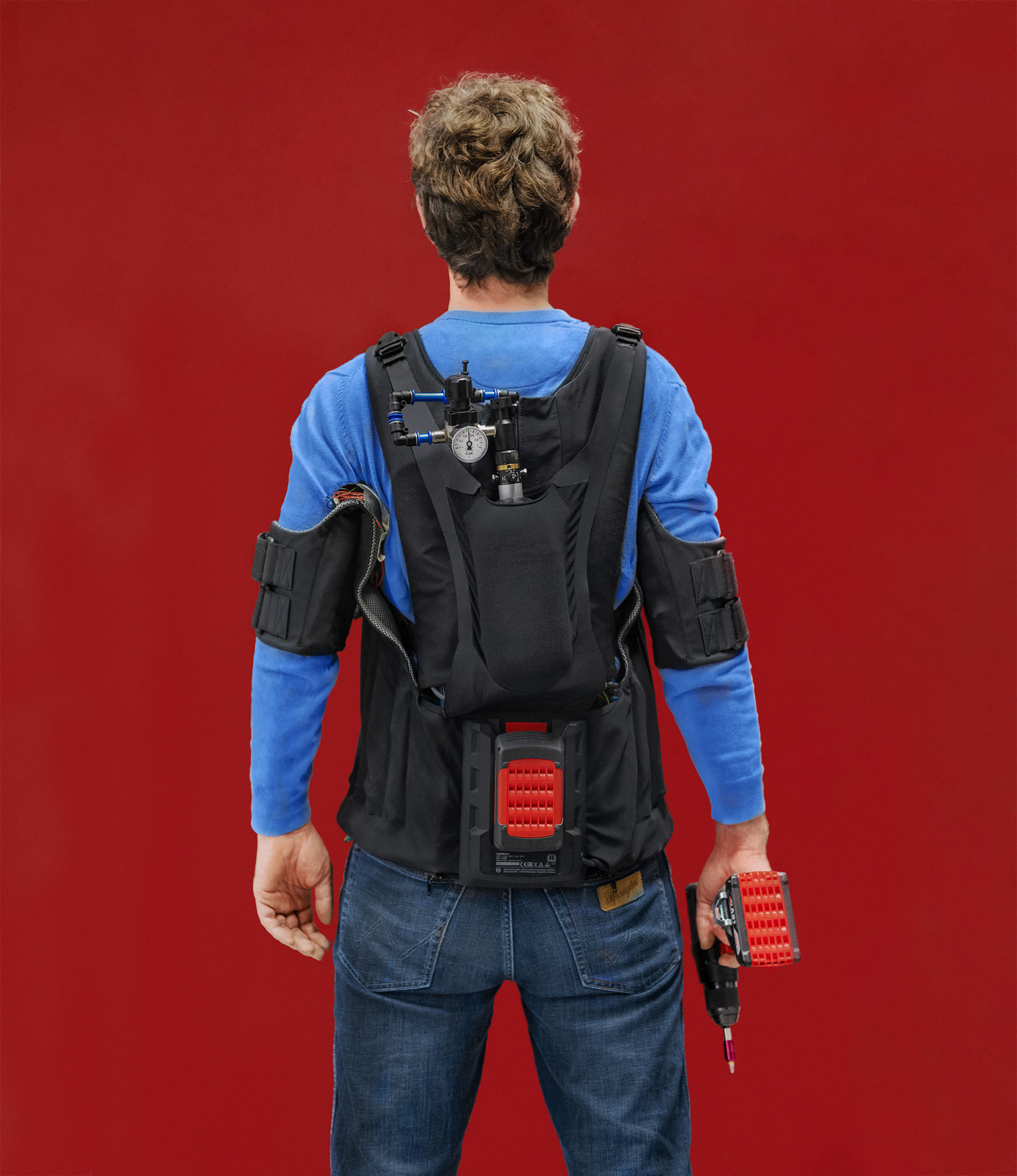
 Fraunhofer Institute for Production Systems and Design Technology
Fraunhofer Institute for Production Systems and Design Technology